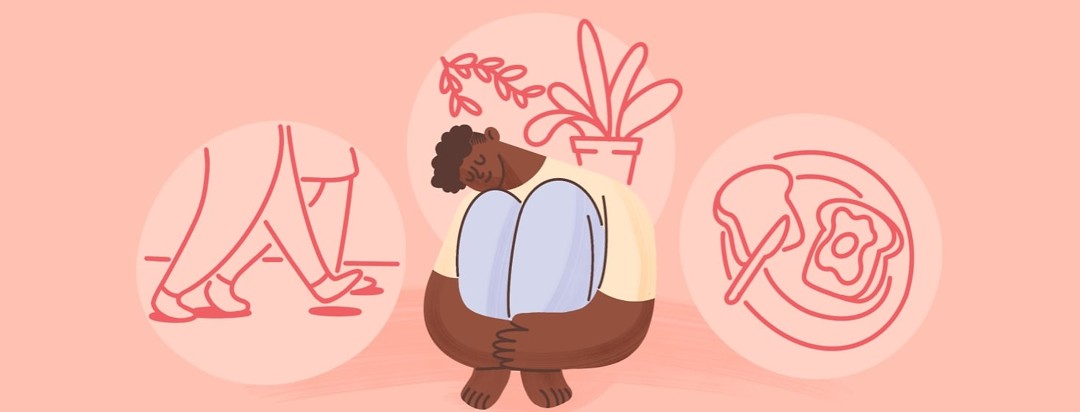Three Types Self-Care: Preventive, Acute, and Rescue
Self-care sometimes gets a bad rap as a self-indulgent luxury, but it’s far more than spa days. Instead of lavish pampering, self-care is about engaging in activities that recharge you to take care of your physical, mental, and emotional health. It’s a necessity for anyone to live well and is particularly important when you have migraine.
Most articles take a one-size-fits-all approach to self-care, but for those of us with migraine, self-care needs change from one day to the next. As with migraine medication, I think of self-care in three categories: preventive, acute, and rescue. My migraine level on a particular day (or in a particular hour!) determines the kind of self-care I need. Here’s what that looks like for me.
Preventive self-care
My preventive self-care is everything I do on a day-to-day basis when I feel OK. Every day, I try to go for a walk, spend time outside, eat nutritious food, and get eight hours of sleep. I also know I’m at my best when I get to spend time with loved ones, so I try to schedule regular visits with friends.
You may have noticed that I say I try to do all those things regularly. I don’t always succeed because life can get in the way. I don’t beat myself up when I can’t do everything I like to do, but I start to feel antsy if I don’t get my walk in or time outdoors and can feel the migraine attacks creep up when I don’t eat or sleep well. It took a while for all these self-care practices to become routine, but I feel the repercussions of not keeping up with them in the form of increase migraine attacks.
Acute self-care
If I’m having more frequent migraine attacks or know I’m running myself ragged with family commitments or work travel, I focus on acute self-care. That requires being in tune with my body and knowing what I need that particular day. Most of the time, the overarching theme is resting, resting, resting. I work from home instead of going into the office. I still try to exercise, but if I feel like I’m walking through molasses, I head home instead of pushing myself to get all my steps in. I also simplify meals but still try to keep them nutritious. I’ll eat sandwiches with a lot of vegetables, eggs scrambled with veggies, or eat a very simple salad that doesn’t require chopping vegetables.
In acute self-care mode, I prioritize my health even more than usual. I let housework slide, wear clothes that don’t need to be ironed, and skip shaving my legs. Sometimes I’ll reschedule with a friend if I know the stress of making the date happen will be more wearing than the conversation will be restorative.
Rescue self-care
When I’m in need of rescue self-care, I do whatever I need to do so I don’t completely fall apart. This happens when I’m in an active migraine attack and can’t do much more than sit or lie around. I try to be incredibly gentle with myself, which might make this the most difficult self-care of all.
Instead of fretting over not getting things done, having to cancel plans, or letting someone down, I try to remind myself that having a migraine attack is what I’m doing in that moment. It’s the only thing I can be doing, so it’s the only thing I should be doing. One of my yoga teachers tells us to “just be” in our end-of-class meditations. That’s what I tell myself during a migraine attack — my only job at that moment is to be.
While I’m just being, I set myself up in a comfortable room. The family room is my favorite because it has a view of the backyard, so I at least get a little bit of nature even if I can’t go outside. I let myself do crosswords (easy ones so I can handle them with brain fog) or play solitaire, read or listen to whatever I want, and eat comfort food.
Self-care in uncertain times
Since this article will be published while most of us are social distancing, it's important to acknowledge that nothing is normal right now, even self-care. These three types of self-care still apply, but the lines are much blurrier than normal. In normal times, I'm in preventive self-care mode most of the time, acute some of the time, and rescue only when things get really bad. Right now, I'm trying to keep up with my preventive self-care (often unsuccessfully), doing acute self-care all the time, and dipping into rescue self-care almost every day. Some days, I'm in rescue mode all day. And that's totally OK. In this time of high stress, grief, and anxiety, it's extra important to take care of ourselves in whatever way we can.
What’s your self-care strategy?
What strategies do you use for self-care? Do they vary depending on whether you have a migraine attack or not? Please share in the comments below.

Join the conversation